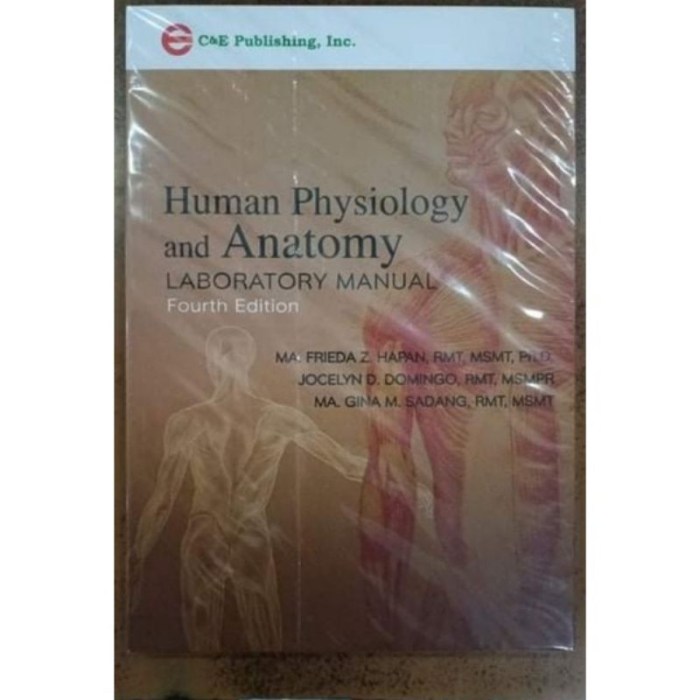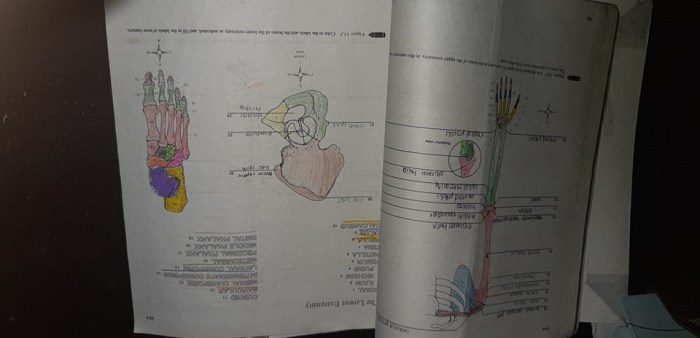The human anatomy laboratory manual answer key serves as an indispensable tool for students and instructors in the field of human anatomy. This comprehensive guide explores the purpose, structure, and significance of answer keys, providing valuable insights into their effective utilization to enhance learning outcomes.
An answer key for a human anatomy laboratory manual typically consists of detailed explanations, precise definitions, step-by-step procedures, and illustrative diagrams. These elements collectively provide students with a reliable source of information to verify their understanding, reinforce concepts, and identify areas for further study.
Human Anatomy Laboratory Manual Answer Key: An Overview

An answer key for a human anatomy laboratory manual serves as an invaluable resource for students and instructors alike. It provides a comprehensive guide to the laboratory exercises, offering detailed explanations, definitions, and illustrations to aid in understanding the complex structures and processes of the human body.
Typically, an answer key for a human anatomy laboratory manual is organized into sections corresponding to the laboratory exercises. Each section contains answers to the questions and exercises posed in the laboratory manual, along with additional information to enhance understanding.
The benefits of using an answer key for students in anatomy courses are numerous. It enables students to check their understanding of the material, identify areas where they need further clarification, and prepare for laboratory sessions and assessments.
Key Components of an Answer Key
An effective answer key for a human anatomy laboratory manual should include the following essential components:
- Definitions:Clear and concise definitions of anatomical terms and concepts
- Procedures:Step-by-step instructions for laboratory exercises, including safety precautions and troubleshooting tips
- Illustrations:Diagrams, photographs, and other visual aids to illustrate anatomical structures and processes
Accuracy and clarity are paramount in the information provided in the answer key. It should be free of errors and use precise language to ensure that students can rely on it as a trustworthy source of information.
Utilizing an Answer Key Effectively
Students can effectively use an answer key to enhance their learning in anatomy laboratory sessions by:
- Checking their understanding:Reviewing the answers after completing the laboratory exercises to identify areas where they need further clarification
- Preparing for laboratory sessions:Studying the answer key before attending laboratory sessions to familiarize themselves with the procedures and expected outcomes
- Preparing for assessments:Using the answer key as a study guide to reinforce their knowledge of anatomical structures and processes
It is important to emphasize that while an answer key is a valuable resource, it should not be used as a substitute for critical thinking and independent learning. Students should actively engage with the laboratory material, ask questions, and seek clarification when needed.
Answer Key as a Teaching Tool
Instructors can also utilize the answer key as a teaching tool by:
- Reinforcing concepts:Using the answer key to provide additional explanations and examples during lectures and laboratory sessions
- Facilitating student understanding:Creating interactive learning experiences by incorporating the answer key into quizzes, discussions, and case studies
- Assessing student learning:Using the answer key as a reference for grading laboratory reports and assessments
Digital and Interactive Answer Keys, Human anatomy laboratory manual answer key
Digital or interactive answer keys offer several advantages over traditional printed answer keys. They can be easily updated and revised, allowing for the incorporation of new information and corrections. Additionally, they can include multimedia elements such as videos, simulations, and animations to enhance student engagement and improve learning outcomes.
However, developing and implementing digital answer keys can present challenges, such as ensuring compatibility with different devices and platforms, and addressing issues of security and access.
Conclusion

An answer key for a human anatomy laboratory manual is an essential resource for students and instructors. It provides a comprehensive guide to the laboratory exercises, offering detailed explanations, definitions, and illustrations to aid in understanding the complex structures and processes of the human body.
By effectively utilizing an answer key, students can enhance their learning, prepare for laboratory sessions and assessments, and develop a deeper understanding of human anatomy.
FAQs
What is the primary purpose of a human anatomy laboratory manual answer key?
An answer key provides students with accurate and reliable information to verify their understanding of anatomical structures, procedures, and concepts covered in laboratory sessions.
How can students effectively use an answer key?
Students should use answer keys to check their answers, identify areas for improvement, reinforce their understanding, and supplement their learning from laboratory exercises.
What are the ethical considerations associated with using an answer key?
Answer keys should be used responsibly and in conjunction with critical thinking and independent learning. Students should not rely solely on answer keys to complete assignments or pass exams.